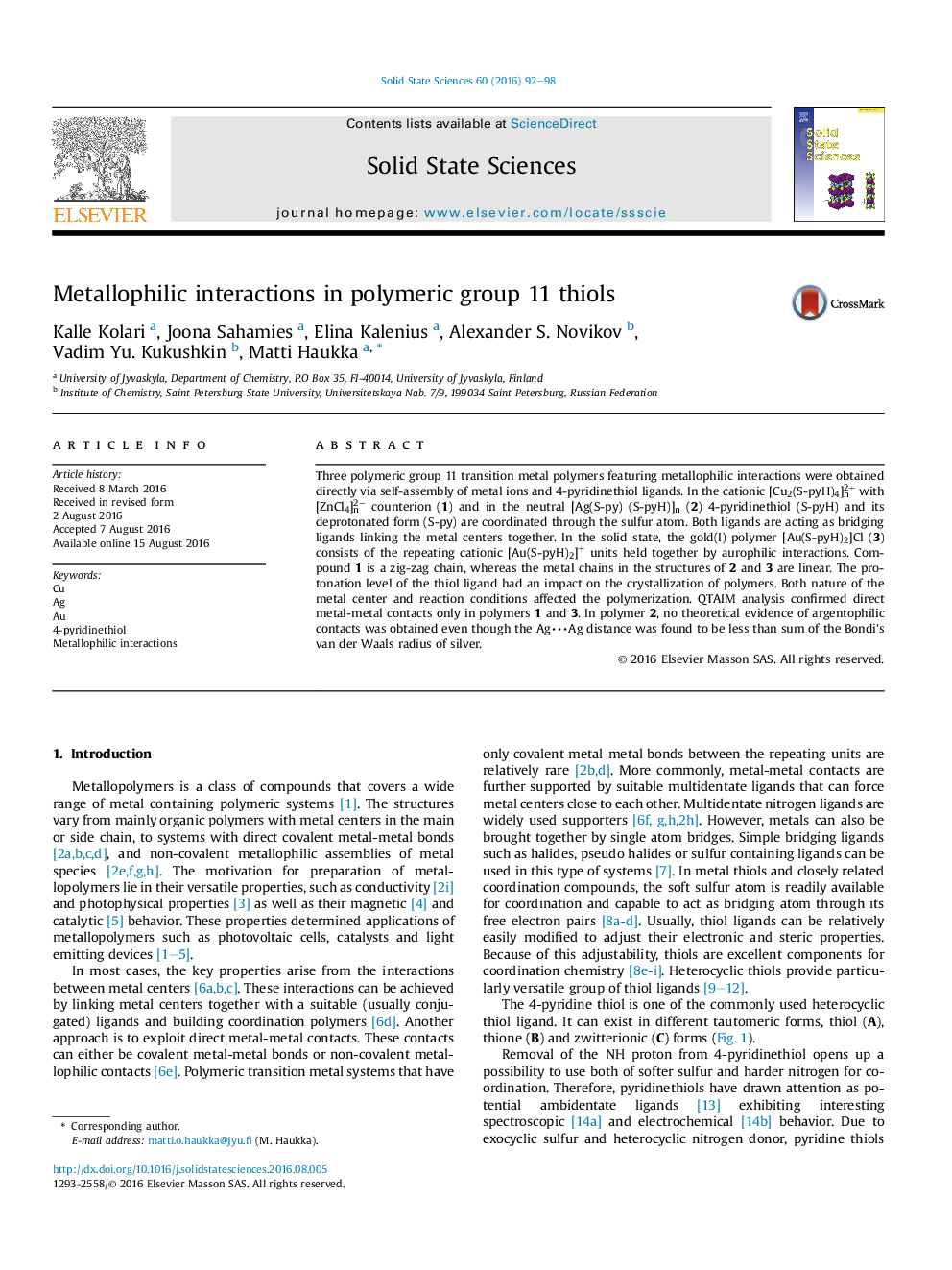| کد مقاله | کد نشریه | سال انتشار | مقاله انگلیسی | نسخه تمام متن |
|---|---|---|---|---|
| 1503945 | 1510962 | 2016 | 7 صفحه PDF | دانلود رایگان |
• Three polymeric group 11 transition metal polymers were synthesized directly via self-assembly of metal ions and 4-pyridinethiol ligands.
• The behavior of the ligand was depending on the nature of the metal center and the reaction conditions.
• Formation of the metallophilic interaction was dependent on the metal and was observed only in Cu and Au polymers.
Three polymeric group 11 transition metal polymers featuring metallophilic interactions were obtained directly via self-assembly of metal ions and 4-pyridinethiol ligands. In the cationic [Cu2(S-pyH)4]n2+ with [ZnCl4]n2− counterion (1) and in the neutral [Ag(S-py) (S-pyH)]n (2) 4-pyridinethiol (S-pyH) and its deprotonated form (S-py) are coordinated through the sulfur atom. Both ligands are acting as bridging ligands linking the metal centers together. In the solid state, the gold(I) polymer [Au(S-pyH)2]Cl (3) consists of the repeating cationic [Au(S-pyH)2]+ units held together by aurophilic interactions. Compound 1 is a zig-zag chain, whereas the metal chains in the structures of 2 and 3 are linear. The protonation level of the thiol ligand had an impact on the crystallization of polymers. Both nature of the metal center and reaction conditions affected the polymerization. QTAIM analysis confirmed direct metal-metal contacts only in polymers 1 and 3. In polymer 2, no theoretical evidence of argentophilic contacts was obtained even though the Ag⋅⋅⋅Ag distance was found to be less than sum of the Bondi's van der Waals radius of silver.
Figure optionsDownload as PowerPoint slide
Journal: Solid State Sciences - Volume 60, October 2016, Pages 92–98
